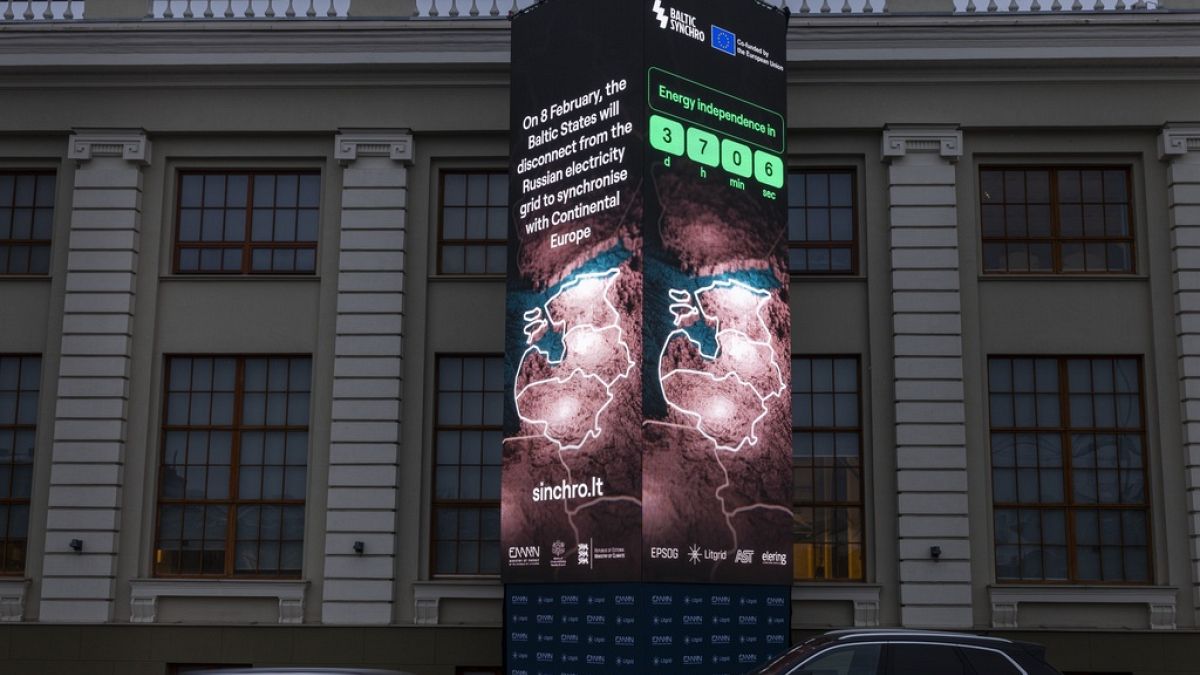Europe
Baltic states cut Russian electricity ties, ending decades of reliance

A New Era for the Baltic States: Cutting Ties with the Soviet-Era Grid
A Historic Disconnect
On a momentous Saturday morning, Lithuania, Latvia, and Estonia took a significant step toward energy independence by disconnecting from the Soviet-era electricity grid. This move marks a pivotal moment in their history, nearly three and a half decades after they broke free from Soviet rule. The Baltic countries have since been working tirelessly to align themselves more closely with their European Union allies. The severing of electricity ties with Russia and Belarus is not just a technical adjustment but carries deep geopolitical and symbolic weight. It underscores their commitment to reducing reliance on their former Soviet neighbors and embracing a future intertwined with Europe.
Lithuanian President Gitanas Nausėda captured the essence of this transition, stating, "This is a physical disconnection from the last remaining element of our reliance on the Russian and Belarusian energy system." The process gained momentum following Russia’s invasion of Ukraine in 2014, which strained Moscow’s relations with the EU and highlighted the urgency of energy independence. By disconnecting from Russia and Belarus, the Baltic states are not only freeing themselves from technical dependencies but also reinforcing their political and economic alignment with Europe.
The Geopolitical and Symbolic Significance of the Move
The decision to cut ties with the Soviet-era grid is steeped in both practical and symbolic significance. For decades, the Baltic states remained connected to the Russian and Belarusian energy systems, a legacy of their Soviet past. However, this connection increasingly became a source of vulnerability, especially as tensions between Russia and the EU escalated. The annexation of Crimea in 2014 and the ongoing conflict in Ukraine made it clear that energy dependence on Russia posed significant risks.
By severing these ties, the Baltic states are sending a clear message about their commitment to European integration and their desire to break free from the gravitational pull of their former colonial ruler. This move is also symbolic for the people of Lithuania, Latvia, and Estonia, who see it as a step toward complete independence and a stronger, more resilience-based future within the EU. The symbolic importance of this transition was further highlighted by a specially-made, 9-meter-tall clock in downtown Vilnius, which counted down the final seconds of the Baltic states’ electricity ties to Russia.
Preparing for the Transition: A Decade of Work
The process of disconnecting from the Soviet-era grid was no overnight decision. Over the years, the Baltic states systematically dismantled 16 power lines that once connected them to Russia and Belarus. Simultaneously, they worked on building a new grid that would link them to the rest of the EU. This involved creating underwater cables in the Baltic Sea and other infrastructure to ensure seamless integration with the European energy system.
On Saturday, all remaining transmission lines connecting the Baltic countries with Russia, Belarus, and Kaliningrad—a Russian exclave sandwiched between Poland and Lithuania—were switched off one by one. This marked the end of an era and the beginning of a 24-hour period during which the Baltic Power System would operate in "island operation mode," standing alone and disconnected from both the Soviet-era grid and the European system.
A New Chapter: Merging with the European Energy System
The Baltic states’ journey toward energy independence reached a milestone on Sunday when they officially merged with the Continental European and Nordic grids. This integration was made possible through several new links with Finland, Sweden, and Poland. The merger not only strengthens the Baltic states’ energy security but also deepens their economic and political ties with their EU allies.
This transition is a testament to the Baltic states’ resilience and their unwavering commitment to European integration. It also reflects the EU’s broader strategy to create a more unified and resilient energy network, reducing dependence on external actors like Russia. The merger is expected to enhance energy stability across the region and pave the way for greater cooperation in the face of future challenges.
Watching for Repercussions: A Region on High Alert
While the Baltic states have taken a bold step toward independence, they remain vigilant about potential repercussions from their former Soviet partners. The three countries, which share a 1,633-kilometer border with Russia and Belarus, officially informed Moscow and Minsk of their disconnection plan in July. Despite this advance notice, there are concerns about how Russia and Belarus might respond.
In Estonia, for instance, public broadcaster ERR reported a surge in generator sales, as residents prepared for possible disruptions. While these precautions may prove unnecessary, they reflect the underlying anxiety about the transition. The Baltic states are acutely aware of Russia’s capacity to exert pressure, whether through energy disruptions or other means. However, they are confident in their ability to navigate this new chapter, knowing they have the support of their EU allies.
A Brighter Future: The Significance of the Transition
The disconnection from the Soviet-era grid and the merger with the European energy system marks a significant turning point for Lithuania, Latvia, and Estonia. It is not just a technical adjustment but a powerful symbol of their journey from Soviet rule to European integration. The move reduces their vulnerability to external pressures and strengthens their position within the EU.
As the Baltic states look to the future, they do so with a renewed sense of confidence and purpose. Their transition to the European energy system is more than just a strategic decision; it is a declaration of their commitment to democracy, stability, and a shared European vision. The clock in Vilnius may have counted down the final seconds of their old ties, but it also ushered in a new era of opportunity and cooperation, paving the way for a brighter, more integrated future.